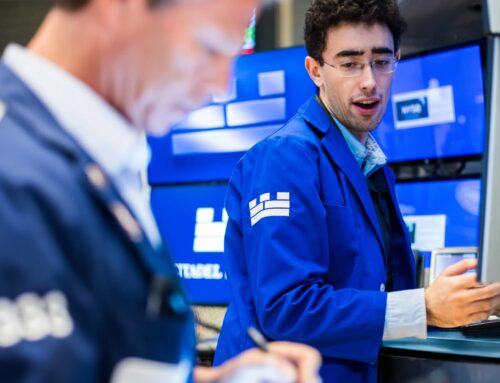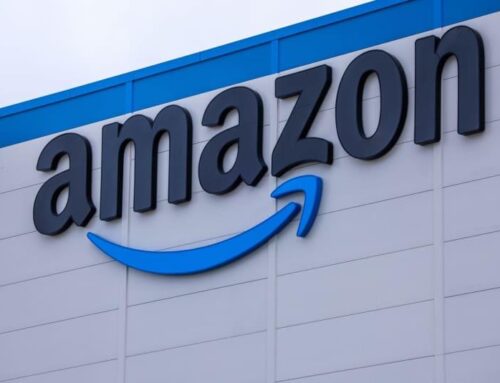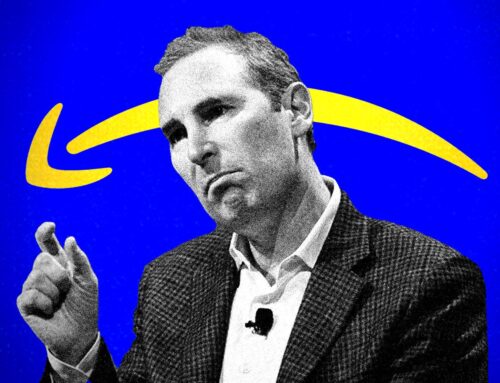Amazon shares slide on light guidance, but we maintain our buy rating
May 1, 2025
Amazon on Thursday reported strong quarterly results, but its stock fell in the after market on softer projections for the second quarter projections — guidance we believe could prove conservative. Revenue increased 9% year over year to $155.67 billion, beating expectations for $155 billion, according to estimates compiled by LSEG. Earnings per share based on generally accepted accounting principles (GAAP) increased to $1.59, compared with $0.98 last year and the $1.36 estimate, per LSEG. Operating income increased 20% over last year to $18.4 billion, beating the $17.4 billion consensus forecast. Amazon Why we own it : Amazon may be widely known for online shopping, but its cloud business is the real breadwinner. Advertising is another fast-growing business with high margins. Investment in robust e-commerce logistics infrastructure makes its online storefront the place to be as management works to aggressively decrease delivery times and reduce overall costs. Prime leverages free shipping and video streaming with tons of other perks to keep users paying every month. Competitors : Walmart , Target , Microsoft and Alphabet Most recent buy : April 15, 2025 Initiated : February 2018 Bottom line It wasn’t as clean of a quarter as what we saw from fellow Magnificent Seven stocks Meta Platforms and Microsoft Wednesday evening, but Amazon still put up good results. Some of the core tenets of our thesis are that as long as Amazon Web Services and advertising — two high-margin revenue streams — keep growing at a rapid clip and management sees more room to reduce the cost to serve its online customers (which they do), margins should continue to expand. If margins are going higher, the stock price should follow. Sure, second-quarter guidance was a little light. But the company has a history of providing an outlook and putting up results at the top end, or above, the range. We don’t fault the company for keeping expectations in check given the tariff situation. On that note, it’s still too early to know how the direct and indirect impact of tariffs will affect Amazon’s operations. So far there’s been little change and management thinks the business is well-equipped to navigate the uncertainty. With shares down about 2% in after-hours trading, extending the year-to-date decline to about 15% and more than 20% from its recent highs, we like these levels as an opportunity to buy for the long term. We’re reiterating our 1 rating and our price target of $240. AMZN YTD mountain Amazon YTD performance Commentary Cloud unit Amazon Web Services (AWS) revenue increased 17% year over year to $29.27 billion. This growth rate marks a small deceleration from the 19% rate it held for the previous three quarters. It was also a small revenue miss versus the consensus forecast. Expectations were high coming into the print following the strong revenue growth acceleration Microsoft Azure reported Wednesday evening, but AWS missed the mark. It sounds like the results could have been a bit better if its AI cloud business — which the company said is a multibillion-dollar annual run rate business growing at a triple-digit-percentage clip — had more capacity to meet demand. “As fast as we actually put the capacity in, it’s being consumed,” CEO Andy Jassy explained on the earnings call. “So, I think we could be helping more customers and driving more revenue for the business if we had more capacity.” “We have a lot more Trainium 2 instances and the next generation of Nvidia’s instances landing in the coming months.” That should help AWS’s numbers as we move through the year. AWS finished the quarter with a backlog of $189 billion, up 20% year over year. This is a sign of strong demand. AWS sales may have come up short, but the operating income performance was strong once again. Margins expanded 183 basis points from last year and are brushing up against 40%. The company cited investments in software and process improvements that optimize server capacity and increase efficiency as a driver of the margin gains. As for the rest of the company, Amazon delivered revenue beats across online stores (5% revenue growth), physical stores (6% revenue growth), subscription services (9% growth), and advertising services (18% growth.) The misses came from third party seller services (5.5% growth) and the other bucket (4% revenue growth), which includes sales of offerings like health-care services, shipping services, and co-brand credit card agreements. Speaking to the impact tariffs may have on consumer spending, CEO Andy Jassy said that the company hasn’t seen “any attenuation of demand yet.” He called out some “heightened buying” in some categories which may suggest stocking up ahead of the tariffs. Jassy also said he has not seen the average selling price of retail items “appreciably” increase yet. He acknowledged things could change, but so far there has been no material impact. Jassy also pointed out that sales of “everyday essentials” are making up a large part of the growth. These items — think stuff you could buy from your local drug store — grew more than twice as fast as the rest of Amazon’s business and represented one out of every three units sold in the United States. By geography, North America sales increased 8% and operating margins expanded slightly from last year but not as much as expected. In the international segment, Amazon’s revenue increased 5%, but operating income and margin missed expectations despite the year over year margin expansion. Margins in both North America were impacted by a one-time charge related to some historical customer returns that haven’t been resolved, and some costs to receive inventory that was pulled forward in anticipation of tariffs. Without these charges, North America and international operating margins would have been 7.2% and 3.7%, respectively, according to CFO Brian Olsavsky. Both would have beaten the consensus estimate. Amazon continues to make headway in lowering its cost to service online customers. One initiative that helped lower delivery costs was the re-architected inbound network, which led to improved inventory placement (a top priority) and higher units per package. “Better placement drives more in-stock selection, reduces travel distances, and speeds up delivery. And having inventory in the right place at the right time increases the likelihood that multiple items can be combined in a package, which helps reduce packaging and cost,” Olsavsky explained. On the capital expenditure side, Amazon invested roughly $24.3 billion in the first quarter, which was right in line with expectations. This keeps Amazon on track to the roughly $100 billion the company forecasted for this year. The bulk of these investments will go to support demand for AWS, custom silicon like its Tranium chip, and technology infrastructure. With earnings from the cloud computing “hyperscalers” now complete, once again there was drop off in capex programs as a result of the uncertain macroenvironment of DeepSeek’s low cost AI model. This should help allay fears of a spending pause on AI chips from Nvidia and Broadcom . Guidance Amazon’s 2025 second-quarter guidance was slightly lighter than anticipated at the midpoint of the range. That’s usually how management plays it. They expect net sales to be between $159 billion to $164 billion, representing growth of 7% to 11% year over year. The $161.5 billion midpoint is a slight beat versus the consensus estimate of $161.21 billion, according to FactSet. The revenue guide factors in a 10-basis-point headwind from foreign exchange. Moving to operating income, Amazon expects $13 billion to $17.5 billion, which at the midpoint of $15.25 billion is a miss compared to the consensus forecast of $17.6 billion, according to FactSet. A seasonal step up in stock-based compensation and one-time costs associated with the project Kuiper satellite launch may be expenses that were not properly modeled, explaining the deviation between guidance and the Street. (Jim Cramer’s Charitable Trust is long AMZN. See here for a full list of the stocks.) As a subscriber to the CNBC Investing Club with Jim Cramer, you will receive a trade alert before Jim makes a trade. Jim waits 45 minutes after sending a trade alert before buying or selling a stock in his charitable trust’s portfolio. If Jim has talked about a stock on CNBC TV, he waits 72 hours after issuing the trade alert before executing the trade. THE ABOVE INVESTING CLUB INFORMATION IS SUBJECT TO OUR TERMS AND CONDITIONS AND PRIVACY POLICY , TOGETHER WITH OUR DISCLAIMER . NO FIDUCIARY OBLIGATION OR DUTY EXISTS, OR IS CREATED, BY VIRTUE OF YOUR RECEIPT OF ANY INFORMATION PROVIDED IN CONNECTION WITH THE INVESTING CLUB. NO SPECIFIC OUTCOME OR PROFIT IS GUARANTEED.
Search
RECENT PRESS RELEASES
Related Post




